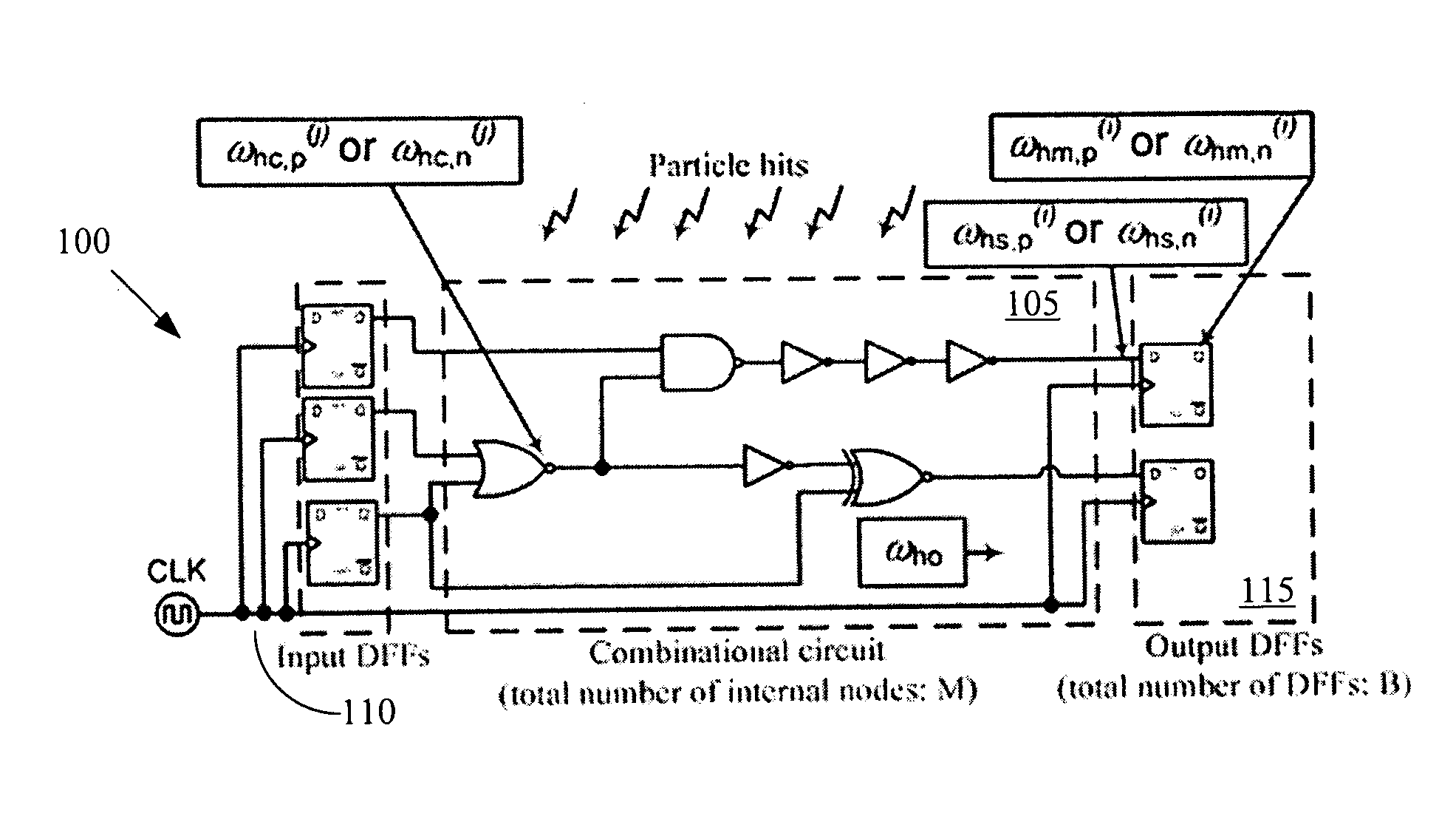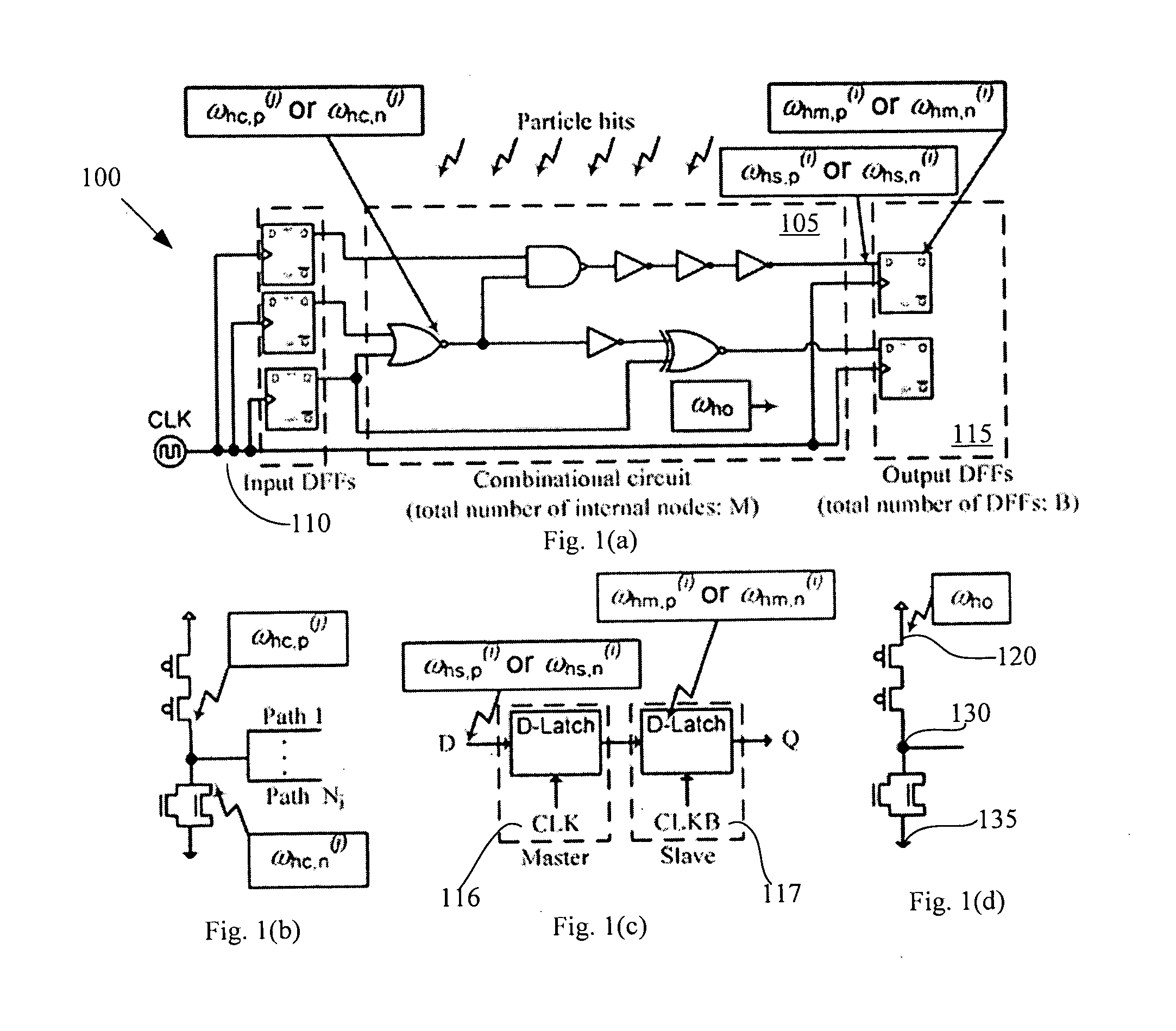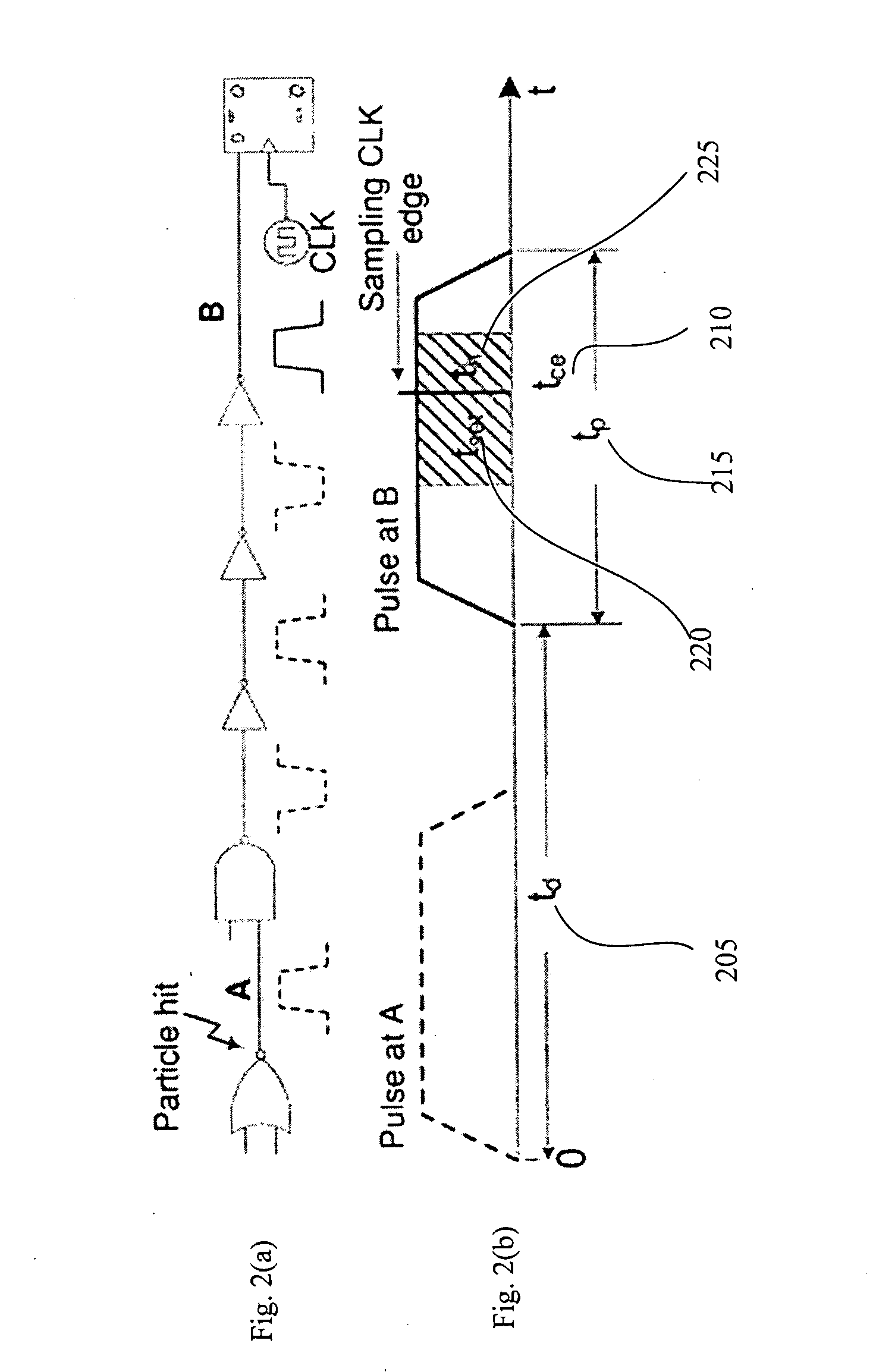Soft error rate analysis system
a technology of error rate analysis and soft error, applied in error detection/correction, computer aided design, instruments, etc., can solve the problems of soft errors, increased vulnerability of logic circuits to soft errors, soft errors, etc., to improve the reliability of electronic systems and maximize reliability.
- Summary
- Abstract
- Description
- Claims
- Application Information
AI Technical Summary
Benefits of technology
Problems solved by technology
Method used
Image
Examples
Embodiment Construction
[0033] The present invention is defined by the appended claims. This description summarizes some aspects of the present embodiments and should not be used to limit the claims.
[0034] While the present disclosure may be embodied in various forms, there are shown in the drawings and will hereinafter be described some exemplary and non-limiting embodiments, with the understanding that the present disclosure is to be considered an exemplification of the disclosure and is not intended to limit the invention to the specific embodiments illustrated.
[0035] In this application, the use of the disjunctive is intended to include the conjunctive. The use of definite or indefinite articles is not intended to indicate cardinality. In particular, a reference to “the” object or “a and an” object is intended to denote also one of a possible plurality of such objects.
[0036] The disclosed soft error rate analysis (SERA) method is systematic, efficient, and versatile. The SERA method is systematic in...
PUM
 Login to View More
Login to View More Abstract
Description
Claims
Application Information
 Login to View More
Login to View More - R&D
- Intellectual Property
- Life Sciences
- Materials
- Tech Scout
- Unparalleled Data Quality
- Higher Quality Content
- 60% Fewer Hallucinations
Browse by: Latest US Patents, China's latest patents, Technical Efficacy Thesaurus, Application Domain, Technology Topic, Popular Technical Reports.
© 2025 PatSnap. All rights reserved.Legal|Privacy policy|Modern Slavery Act Transparency Statement|Sitemap|About US| Contact US: help@patsnap.com



